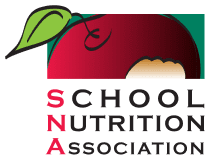Archive
After School Meal Programs

Cool Tropics
Cool Tropics is on a mission to create excitement for all meal patterns; Cafeteria, Classroom, Grab & Go or At…

Horizon Software International
Horizon School Technology proudly presents one of the most innovative solutions for K12 school nutrition. Our Back of House Vendor…

SN Plus: Making the Most of Candidate Interviews
In this national climate of low unemployment, every tip for making the most of your recruitment processes and approaches can…

Journal of Child Nutrition & Management Publishes Spring 2022 Issue
When searching for solutions to common school nutrition challenges, having clear, focused and relevant research from peers in the field…

SNA Chief of Staff Named ASAE Fellow
On April 26, 2022, SNA Chief of Staff and Vice President of Strategy & Governance, Rhea Steele, CAE, ODCP, was…

USDA State-by-State Waiver Requests
On a USDA-hosted webinar for state agencies, the USDA announced that after taking into consideration top priorities shared by state…
Historical NSLP and SBP Participation Tracking
Tracking of national participation rates for the National School Lunch Program and the School Breakfast Program using USDA data.
2018 School Nutrition Operations Report
SNA’s School Nutrition Operations Report: The State of School Nutrition 2018 benchmarks operational practices of school nutrition programs. The report includes information on meal prices, participation rates, lunch and breakfast service venues, nutrition education initiatives, food and beverages trends, as well as plans related to construction and equipment purchases from more than 1,500 school nutrition directors.
2019 School Nutrition Trends Report
SNA’s 2019 School Nutrition Trends Report summarizes findings from a survey conducted with director-level SNA respondent members representing over 800 unique districts…

